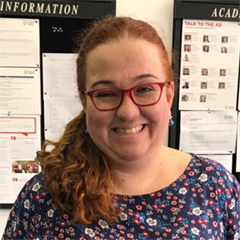The X Factor in Teaching Teens
Have you ever changed your lesson plan (or part of it) halfway through due to students’ lack of engagement? And have you ever regretted changing it because students asked you to do something different in class?
If you answered yes for both questions, you face the same dilemma that we do; which is how much of the lesson plan it is fine to adapt in order to please our students’ imminent needs.
Let’s face it: English isn’t generally taken so seriously by students (and their parents) as much as other subjects in their regular schools. They expect English to be more laid-back. Taking this into account, it’s important to put ourselves in our students’ shoes. We need to be aware of what it’s like to be a teenager.
You might think “if the class is well-planned, they will engage and chances are everything will work accordingly”. But there will be days when a change in the course of action will come in handy; after all, even the most careful lesson plan won’t fit the group’s mood. For instance, the day when Pokemon Go was released. Such was the hype that they wouldn’t have been able to focus on anything else. What could we teachers do in situations like this? When they feel overexcited about things that are going on in their lives, is it wise to hold them back? We might, instead, take it as an opportunity to make them experience English in that context they are interested in.
In events like this, when they are euphoric about something, it’s very common to be lost. So, going back to our example, the easiest escape would have been to come up with something related to Pokemon Go. We could have triggered a discussion about the game. But they were A1 groups so they lacked the language to engage in a discussion about it. For this kind of outside influence that we can’t control, it’s easier to bring them back to the class by using a lighter, game-like activity, one in which they will still be working on their skills; but because it has this game aspect, they will be more interested in it.
Here are a few ideas for you to have some tricks up your sleeve, when you need to be flexible pronto:
- Music – listening to a song together and/or singing along to it, with a lyrics video; talking about the lyrics (from levels B1 on). Using Lyrics Training (website to practice with songs), for example.
- Videos that generate discussion, like FBE channel on YouTube. For instance, in a group with B1 students, you can provide a set of questions and they will answer them.
- On Kahoot, you can pre-select some grammar or vocabulary games you can use as a review of contents you’ve already worked with them.
- “Unplugged games” with cards, hot seat, hot potato, games with post-its, etc.
- Having them create their own games (their own Kahoot, for example)
Surely, all these ideas, however simple, may demand a bit of preparation in advance. You have to work on your tool box, which will keep material to use in those games, ready-to-use cards, and even your bank with pre-selected Kahoot games and songs.
We believe it is essential to be flexible because this will likely generate enthusiasm and arouse students’ interest in English. More importantly, it will help them cherish memories of their learning the language. In addition, our rapport is bound to improve while we show sensitivity and empathy towards teenage learners.
We’ve come to learn that this flexibility works well in the long term. By creating a more positive atmosphere, their ties with English are straightened, which makes them more willing to practice outside the classroom.
Giving them the opportunity to enjoy the time they are in class should always go together with the main aim of each lesson. It’s paramount to help them see and feel this new language as something interesting that they can use; as people who will have a lot of opportunities because they will be better able to communicate in English.
Do you agree? Let us know what you think in the comments box below. We’d love to hear from you!
Keeping in touch with professionals who share the passion for teaching teenagers is edifying. And this is what brought us together. Henrique Zamboni teaches teens in Sao Paulo, Brazil and Michelle Hudson Daniel is based in Seville, Spain. An ocean apart, but with quite similar challenges.
 Co-author:
Co-author:
A licensed Biology teacher who fell in love with English language teaching in 2011, Michelle Hudson holds the CELTA, TKTs Modules 1-3 and a TESOL certificate from Languages International (Auckland, NZ). She is now based in Seville – Spain, teaching at English Connection and also private students.






